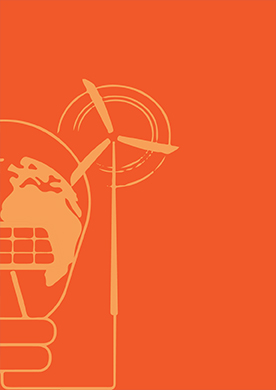Computational tools for digital transformation can be used to collect, store, manage, analyse, and visualise spatial data. These technologies can be used to increase the efficacy and efficiency of a variety of tasks, including resource management, planning, and decision making. Computational technologies can help expand the functionality of Geographic Information Systems (GIS), a strong tool for spatial analysis. Further, these tools can be used to combine data from many sources, automate processes, and create novel analytical techniques.




Too hot to handle?
March 2023 was the second-warmest March for the world in the last 174 years, says the March 2023 Global Climate Report by the US National Oceanic and Atmospheric Administration (NOAA). With the seventh-warmest January and fourth-warmest February (in the last 174 years) also being this year — as reported by NOAA — 2023 has, indeed, had a warm start. So, are warmer years becoming a reality?
Techno-economic Modelling of Onshore Wind Power
India has the fourth largest installed capacity of wind energy in the world, with the addition of 41 GW as of June 2022. However, this figure is quite low when we consider India’s potential of 695.5 GW at 120 m hub height and 302 GW at 100 m hub height. To unlock the true potential of wind energy in India and generate power efficiently, current wind farm designs need to be optimised. Increasing the hub height and optimising the positioning of turbines are two options that play a huge role in efficient power generation and land utilisation.
Technology Assessment Framework: Methodology Note
Technology plays a crucial role in realising the sustainable development goals of India. In this context, the government has introduced various policies to support indigenous development of technology, and strengthen collaborations with foreign entities for technology sourcing and development. However, technology implementation may have some negative impact on the environment during various phases of development.
A Hydrogen Economy Can Have Huge Dividends for India
According to Union Ministry of Statistics and Programme Implementation, India produced 15,311 petajoules of energy in 2020 of which 81% was derived from fossil fuels such as coal, oil, and natural gas. In fact, fossil fuels have been the fuel of choice for decades despite causing permanent damage to our environment.
Unchained Melody: Beating Research Blues with Free Geospatial Data
In research, especially, data takes centre stage almost always. Today, use of GIS-based technology at all levels of the project — from design to data collection and management, analysis, mapping and visualisation, storytelling and public engagement, to creating and measuring impact — is indispensable.
Can the Indian steel industry Join the Hydrogen revolution?
If India wants to retain the edge as one of the leading steel producers globally, the Government should provide incentives through policies for adoption of hydrogen.
Steel has been the backbone of the Indian economy since Independence. India produced 111 Million tonnes (Mt) of steel in 2018, becoming the second-largest steel producer in the world after China. According to the National Steel Policy, 2017, India’s annual steel production will reach 300 Mt by 2030.
Models for Informed Decisions
Think tanks play a critical role in influencing policy discourses through evidence-based analysis and ideation. Since 2005, the Center for Study of Science, Technology and Policy (CSTEP) has been working with various governments to address long-term issues in key areas such as energy, climate, and health. CSTEP has developed a wide range of computational tools using inter-disciplinary methods to assist governments in examining and improving the efficacy of policies, especially in the energy sector.